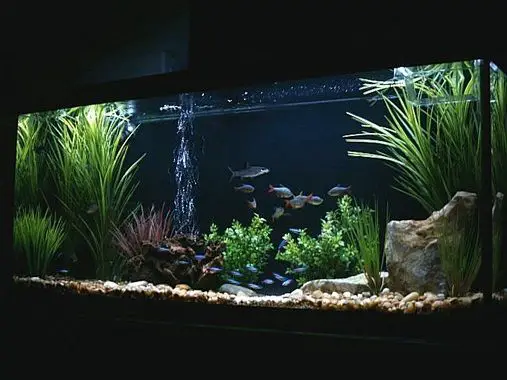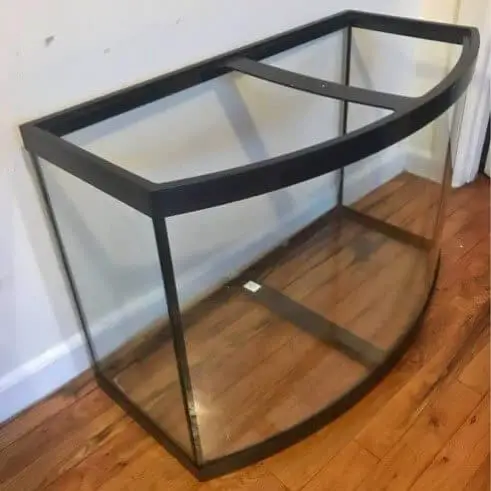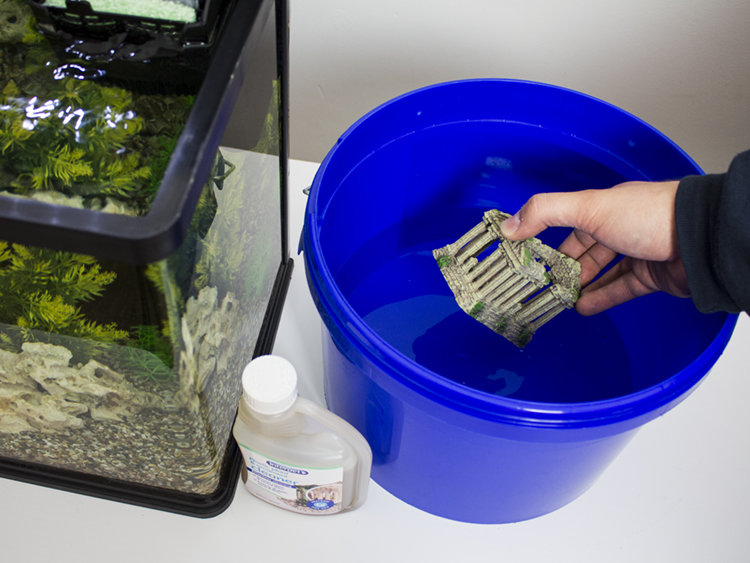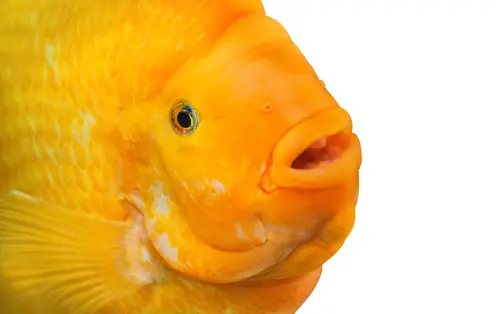Blasting Sand for Aquarium: The Ultimate Guide to Transform Your Underwater Oasis
Blasting sand is an excellent choice for aquariums due to its ability to provide a natural look and optimal conditions for plant growth. It is a type of substrate that is commonly used in aquariums as it is inert, meaning it won’t alter the water chemistry.
Blasting sand is also an affordable option that is easy to clean and maintain. It provides a stable foundation for plants to anchor their roots, while also allowing for easy cleaning of waste and debris. Its coarse texture promotes good water circulation and prevents the formation of anaerobic pockets.
Overall, blasting sand is a popular choice among aquarium enthusiasts for its visual appeal and practical benefits.
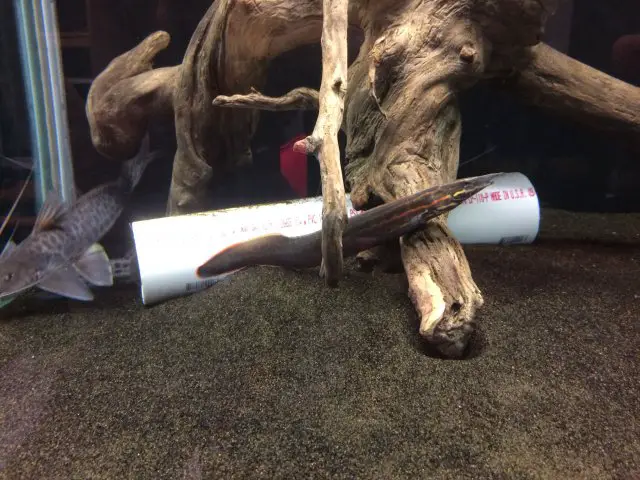
Credit: monsterfishkeepers.com
Why Blasting Sand Is The Ideal Choice For Your Aquarium
Blasting sand is the ideal choice for keeping your aquarium in top-notch condition. Not only does it enhance the aesthetics of your underwater oasis, but it also offers several benefits as a substrate option. We will explore why blasting sand is the go-to option for aquarium enthusiasts.
So, let’s dive in and discover the amazing features that make blasting sand a superior choice!
Benefits Of Using Blasting Sand In Aquariums:
- High density: Blasting sand has a high density, which prevents it from compacting easily. This ensures that water flows freely through the substrate, maintaining a healthy and oxygen-rich environment for aquatic life.
- Neutral ph: Blasting sand has a neutral ph, making it compatible with a wide variety of fish species. This eliminates the need for constant monitoring and adjustment of the tank’s ph levels, providing a hassle-free experience for aquarium owners.
- Cost-effective: Compared to other substrate options, blasting sand is a budget-friendly choice. It provides excellent value for money, offering both functionality and aesthetic appeal without breaking the bank.
- Easy maintenance: Blasting sand is easy to clean and maintain. Its smooth surface allows debris and waste to settle on top, making it easy to remove during regular cleaning sessions. This saves you time and effort, leaving you with more quality moments to enjoy the beauty of your aquarium.
How Blasting Sand Enhances The Aesthetics Of Your Underwater Oasis:
- Natural appearance: Blasting sand resembles the texture and color of natural riverbeds, creating a realistic and visually appealing underwater landscape. It provides a natural and organic look that mimics the habitat of many fish species, enhancing the overall aesthetics of your aquarium.
- Customization options: Blasting sand allows for endless customization possibilities. You can mix different colors and textures of sand to create unique designs and patterns in your tank. Whether you prefer a sandy beach-like environment or a rocky riverbed, blasting sand gives you the freedom to create your desired aquascape.
- Vibrant fish colors: The contrasting color of blasting sand serves as an excellent backdrop to showcase the vibrant colors of your fish. The sand’s light reflection enhances the vivid hues, making your aquatic companions truly stand out in all their stunning glory.
Features That Make Blasting Sand A Superior Substrate Option:
- Non-toxic: Blasting sand is free from harmful contaminants, making it safe for your aquatic pets. It doesn’t leach any chemicals into the water, ensuring a healthy and stress-free environment for your fish.
- Grain size options: Blasting sand comes in various grain sizes, allowing you to choose one that suits your specific needs. Fine sand is perfect for delicate species and plants, while coarser sand provides better root anchoring for larger plants.
- Beneficial for plants: Blasting sand provides a stable and nutrient-rich substrate for aquatic plants. It facilitates the growth of beneficial bacteria that aid in breaking down waste and creating a balanced ecosystem within your aquarium.
Blasting sand is the ideal choice for aquarium enthusiasts looking to enhance the aesthetics of their underwater oasis while maintaining a healthy environment for their aquatic pets. With its numerous benefits and visually appealing features, blasting sand undoubtedly stands out as a superior substrate option.
So, why wait? Give your aquarium the upgrade it deserves with blasting sand!
Choosing The Right Blasting Sand For Your Aquarium
Understanding The Different Types Of Blasting Sand Available
When it comes to choosing the right blasting sand for your aquarium, it’s important to understand the different types available and their characteristics. Here are the key points to keep in mind:
- River sand: This type of blasting sand is commonly found in rivers and has a smooth texture. It is ideal for aquariums with bottom-dwelling fish as it provides a soft substrate that mimics their natural habitats.
- Quartz sand: Known for its durability and high silica content, quartz sand is a popular choice for aquariums. It comes in various grain sizes, allowing you to create different types of landscapes in your tank.
- Coral sand: If you have a marine aquarium or a reef tank, coral sand is the way to go. It is made up of crushed coral skeletons and helps maintain stable ph levels in saltwater tanks.
- Black blasting sand: With its dark color, black blasting sand can create a striking contrast in your aquarium. It is often used in planted tanks as it enhances the colors of aquatic plants and promotes healthy root growth.
- Silica sand: Silica sand is chemically inert and won’t affect the water chemistry in your aquarium. It is commonly used in freshwater aquariums and is available in different colors, such as white and beige.
Factors To Consider When Selecting Blasting Sand For Your Specific Aquarium Needs
Choosing the right blasting sand for your aquarium involves considering several factors to ensure the well-being of your aquatic pets. Here are some key points to consider:
- Compatibility with aquarium inhabitants: Different species of fish and invertebrates may have specific needs when it comes to substrate. Make sure the blasting sand you choose is suitable for the species you have in your tank.
- Grain size: The grain size of the blasting sand is important as it affects the overall appearance and functionality of the substrate. Fine sand is great for delicate plants and small fish, while larger grains are better suited for tanks with larger fish that dig.
- Water parameters: Some blasting sands, like coral sand, can affect the ph and hardness of your tank water. Consider the water parameters required by your fish and plants, and choose a sand that will help maintain the desired conditions.
- Ease of maintenance: Consider how easy it will be to clean and maintain the blasting sand in your aquarium. Some sands may require more frequent cleaning or can be more difficult to siphon.
- Aesthetics: Take into account the overall look you want to achieve in your aquarium. Different blasting sands come in various colors and textures, so choose one that will complement your tank’s design and create the desired visual impact.
How To Determine The Appropriate Quantity Of Blasting Sand For Your Tank
Getting the right amount of blasting sand for your aquarium is crucial to achieving the desired depth and coverage. Here’s how to determine the appropriate quantity:
- Measure your tank’s dimensions: Begin by measuring the length, width, and desired depth of the sand bed in your aquarium. These measurements will help calculate the volume of sand needed.
- Use an aquarium substrate calculator: Many online resources offer substrate calculators that allow you to input your tank’s dimensions and calculate the required amount of blasting sand. These calculators take into account different factors such as grain size and desired thickness of the sand bed.
- Consider displacement: Keep in mind that certain aquarium decorations and structures, such as rocks and driftwood, may displace sand. Take this into account when calculating the quantity needed.
- Buy slightly more than necessary: It’s always a good idea to purchase a little more blasting sand than you think you’ll need. This way, you’ll have extra in case of spills or if you decide to adjust the sand bed later on.
By understanding the different types of blasting sand, considering the relevant factors, and accurately determining the quantity needed, you’ll be well-equipped to choose the right blasting sand for your aquarium. Remember to provide a suitable substrate that meets the needs of your aquatic pets while also creating an aesthetically pleasing environment.
Preparing And Installing Blasting Sand In Your Aquarium
Essential Steps For Preparing Blasting Sand Before Adding It To Your Aquarium
Before adding blasting sand to your aquarium, it is crucial to prepare and clean it properly. Follow these essential steps to ensure the sand is safe for your aquatic pets:
- Begin by choosing the right type of blasting sand for your aquarium. Opt for sand specifically labeled as aquarium-safe, as other types may contain harmful chemicals or toxins.
- Thoroughly rinse the blasting sand before adding it to your aquarium. Place the sand in a bucket or colander and run water over it. Continue rinsing until the water runs clear, removing any dirt, dust, or debris.
- Soak the blasting sand in clean water for a few hours. This process helps to further remove any remaining impurities and allows the sand to settle.
- After soaking, give the sand a final rinse to ensure all particles and residue are completely removed. This step is crucial for preventing cloudiness and maintaining water clarity in your aquarium.
Proper Techniques For Rinsing And Cleaning Blasting Sand Thoroughly
To ensure your blasting sand is thoroughly rinsed and cleaned, follow these proper techniques:
- Start by filling a bucket or container with the blasting sand you intend to use. It’s better to work in smaller batches for easier cleaning.
- Place the sand-filled container under a faucet and turn on the water. Allow the water to run over the sand, ensuring even distribution and coverage.
- Stir the sand gently with your hand while the water flows to dislodge any trapped dirt or debris. Continue this process until the water runs clear.
- If necessary, repeat the rinsing process multiple times to achieve the desired cleanliness. Remember, it’s essential to remove all dust, dirt, and particles, as these can cloud your aquarium water and negatively affect your fish.
Step-By-Step Instructions For Installing Blasting Sand In Your Aquarium
Installing blasting sand in your aquarium requires careful consideration and attention to detail. Follow these step-by-step instructions to ensure a successful installation:
- Prepare your aquarium by removing any existing substrate or decorations. Empty the tank of water and thoroughly clean the glass or acrylic surfaces.
- Slowly add the rinsed and cleaned blasting sand to your aquarium. Start by pouring it into one corner of the tank and using a clean hand or tool to spread it evenly across the bottom. Aim for a layer about 1-2 inches deep, depending on your preferences and the needs of your aquatic plants or fish.
- Gently smooth and level the blasting sand to create a uniform look. Avoid creating any high or low spots, as these can affect the stability of your aquascape.
- Gradually refill the aquarium with water, taking care to pour the water onto a plate, saucer, or plastic bag placed on top of the blasting sand to avoid disturbing it. This technique helps to prevent the sand from stirring up and clouding the water.
- Once the tank is filled, turn on the filtration system to promote water circulation and establish a healthy environment for your aquatic inhabitants.
- Allow the sand to settle for a few hours, monitoring the water clarity. If the water becomes cloudy, don’t worry – it’s normal during the initial setup. The sand should eventually settle, leaving your aquarium clear and ready for your fish.
Following these essential steps for preparing, rinsing, and installing blasting sand in your aquarium will help create a safe and visually appealing environment for your aquatic pets. Enjoy the beauty and benefits of a well-maintained aquatic setup!
Best Practices For An Even And Level Blasting Sand Bed
Creating an even and level blasting sand bed in your aquarium is crucial for the overall aesthetics and functionality of the tank. An uneven sand bed can not only look unappealing but can also lead to shifting and instability within the aquarium.
To ensure a smooth and level sand bed, follow these tips and tricks:
- Use the right amount of sand: The key to achieving a uniform sand bed is to use an appropriate amount of blasting sand. Too little sand can result in bare spots, while too much can make it challenging to level the bed. Aim for a depth of around 1-2 inches for optimal coverage.
- Prepare the tank: Before adding the blasting sand, make sure to thoroughly clean and prep the tank. Remove any debris, dirt, or old substrate that may affect the evenness of the sand bed. It’s also a good idea to place a layer of aquarium-safe buffer substrate underneath the blasting sand to prevent any potential ph spikes.
- Spread the sand evenly: When adding the blasting sand to the tank, distribute it as evenly as possible. You can use your hand or a clean scoop to gently pour the sand across the designated area. Take your time and ensure that the sand is spread uniformly, avoiding any clumps or concentrated piles.
- Rinse the sand before adding: Blasting sand may contain impurities or fine particles that can cloud the water. To prevent this, it’s essential to rinse the sand thoroughly before adding it to the aquarium. Use a bucket or a fine mesh sieve to wash the sand until the water runs clear. This will help prevent any cloudiness and maintain water clarity.
- Level the sand bed: Once the sand is added, use a leveled object such as a ruler or a straight edge to check for any uneven areas. Gently level the sand by lightly dragging the leveled object across the bed in a back-and-forth motion. Pay extra attention to the corners and edges of the tank to ensure a smooth and level appearance.
- Avoid disruptive tank inhabitants: Some aquarium inhabitants, such as burrowing fish or bottom-dwelling species, can inadvertently disturb the sand bed, leading to unevenness. Consider the compatibility of your tank inhabitants with a sand substrate and choose species that are less likely to disrupt the sand.
- Monitor and adjust: Regularly observe the sand bed and make any necessary adjustments as needed. Over time, the sand bed may settle or shift slightly, especially in high-traffic areas. Using a small rake or your hand, gently smooth out any uneven areas to maintain a level surface.
- Maintain proper water flow: Proper water flow within the tank is essential for preventing any accumulation or shifting of the blasting sand. Ensure that your aquarium’s filtration system is functioning correctly to maintain a gentle and consistent water flow. This will help prevent sand particles from being displaced or creating uneven spots.
- Consider using live sand: Live sand, which contains beneficial bacteria and microorganisms, can be an excellent option for achieving a stable and balanced sand bed. The live sand helps promote a healthy environment by aiding in the breakdown of waste and maintaining water quality.
- Regular maintenance: Regular maintenance such as vacuuming the sand bed during water changes can help keep the sand bed even and prevent debris from accumulating. Take care not to disturb the leveled sand while performing maintenance, as it can lead to shifting and unevenness.
By following these best practices, you can ensure that your blasting sand bed is even and level, creating a visually appealing and stable environment for your aquarium inhabitants. Remember to regularly monitor and maintain the sand bed to keep it looking its best.
Supplementing Blasting Sand With Additional Substrate Materials
Incorporating Other Substrate Materials Alongside Blasting Sand For Added Benefits
Blasting sand is an excellent choice for an aquarium substrate due to its affordability and effectiveness in promoting a healthy aquatic environment. However, supplementing blasting sand with additional substrate materials can offer several benefits, including enhanced aesthetics and improved functionality.
Here, we will explore some compatible substrates that pair well with blasting sand and discuss the advantages of using a combination substrate approach.
Examples Of Compatible Substrates That Pair Well With Blasting Sand:
- Aquarium soil: Adding aquarium soil to the blasting sand creates a nutrient-rich substrate, which is beneficial for planted aquariums. The soil provides essential nutrients for plants’ growth, promoting healthier root development and fostering lush greenery.
- Gravel: Combining blasting sand with gravel can create an attractive and visually appealing substrate. Gravel comes in various sizes and colors, allowing you to personalize and create unique patterns in your aquarium. It also provides hiding spots for bottom-dwelling fish and supports beneficial bacteria growth.
- Crushed coral: If you have a marine aquarium, incorporating crushed coral with blasting sand helps maintain the ph levels in the water. Crushed coral acts as a natural buffer, counteracting the acidity, and keeping the water chemistry stable for your marine creatures.
- Clay-based substrates: Clay-based substrates, such as laterite clay or red clay, can be mixed with blasting sand to improve water fertility for planted aquariums. These substrates release beneficial elements into the water column, supporting plant growth and overall health.
- Coral sand: In a marine aquarium, combining blasting sand with coral sand can create a realistic ocean floor look. Coral sand not only enhances the aesthetic appeal but also provides natural calcium and other essential minerals for the well-being of marine organisms.
Balancing Aesthetics And Functionality With A Combination Substrate Approach:
When incorporating other substrate materials alongside blasting sand, it is important to strike a balance between aesthetics and functionality. Here are some considerations to keep in mind:
- Depth variation: Create depth variations by layering different substrates. Arrange blasting sand in the foreground for a clean look, while using other substrates in the background for a more textured and natural appearance.
- Planting areas: Use nutrient-rich substrates like aquarium soil in planting areas to provide plants with the necessary nutrients. Blasting sand can be used in the areas where plants are minimal or non-existent, ensuring a uniform and appealing overall look.
- Fish preferences: Consider the specific needs and behavior of your fish when choosing a combination substrate. Some species may require a smoother substrate to avoid injury, while others prefer digging or sifting through coarser substrates.
By incorporating other compatible substrates alongside blasting sand, you can create a visually appealing aquarium while providing the ideal environment for your aquatic plants, fish, or invertebrates. Remember to research the specific requirements of your aquarium inhabitants and choose substrates accordingly to promote optimal growth and well-being.
Maintaining A Healthy Aquarium With Blasting Sand
Understanding The Importance Of Regular Maintenance And Cleaning Routines
Keeping your aquarium clean and well-maintained is essential for the health and happiness of your aquatic pets. Blasting sand can provide a beautiful and natural-looking substrate for your aquarium, but it also requires regular maintenance to ensure a healthy environment.
Here are some key points to understand:
- Regular water changes: Just like any aquarium, a blasting sand aquarium requires regular water changes to maintain water quality. Aim for weekly water changes of 10-15% to remove any accumulated debris, excess nutrients, and prevent the buildup of harmful substances.
- Vacuuming the substrate: Blasting sand can trap debris and waste particles, so it’s important to regularly vacuum the substrate to keep it clean. Use a gravel vacuum or siphon to remove any uneaten food, fish waste, and excess organic matter, preventing it from decomposing and affecting water quality.
- Maintaining proper filtration: A good filtration system is crucial for a blasting sand aquarium. Make sure to choose a filter that can handle the size of your tank and provides mechanical, biological, and chemical filtration. Regularly clean or replace filter media to prevent clogs and maintain optimal filtration efficiency.
- Testing water parameters: Monitoring water parameters is vital for the overall health of your aquarium. Test the levels of ammonia, nitrite, nitrate, ph, and temperature regularly to ensure they are within the appropriate range for your fish and plants. Make any necessary adjustments to maintain a stable and healthy environment.
- Algae control: Blasting sand can sometimes contribute to algae growth in your aquarium. To control algae, you can reduce the duration of lighting, regularly clean off algae from tank walls and decorations, and introduce algae-eating fish or invertebrates into your tank.
Tips For Successfully Incorporating Live Plants In A Blasting Sand Aquarium
Live plants can greatly enhance the beauty and functionality of a blasting sand aquarium. Here are some tips to successfully incorporate live plants in your aquarium:
- Selecting suitable plant species: Choose plant species that are compatible with your aquarium’s lighting, water parameters, and the blasting sand substrate. Research the specific requirements of each plant to ensure they will thrive in your aquarium.
- Preparing the blasting sand for planting: Before planting live plants, rinse the blasting sand thoroughly to remove any dust or debris. Optionally, you can also add a thin layer of nutrient-rich substrate or root tabs underneath the blasting sand to provide additional nutrients for the plants’ roots.
- Planting techniques: When planting live plants in a blasting sand aquarium, gently insert the plant roots into the substrate, ensuring they are securely buried but not buried too deeply. Avoid damaging the roots or crowns of the plants during the planting process.
- Providing adequate lighting and nutrients: Live plants require proper lighting and nutrients to thrive. Invest in quality aquarium lights that provide the appropriate spectrum and intensity for your chosen plant species. Consider supplementing with liquid fertilizers or co2 injection to ensure adequate nutrient availability for the plants.
- Pruning and maintenance: Regularly trim and maintain the live plants in your blasting sand aquarium to prevent overgrowth and maintain a desired aesthetic. Remove any dead or decaying plant material promptly to maintain water quality and prevent algae issues.
Troubleshooting Common Issues Associated With Blasting Sand Substrates
While blasting sand can be a great choice for your aquarium substrate, it’s essential to be aware of common issues that may arise. Here are some troubleshooting tips for dealing with these issues:
- Cloudy water: New blasting sand substrates may cause temporary cloudiness in your aquarium. This is usually due to fine sediment particles suspending in the water. To resolve this issue, perform frequent water changes and use a fine mechanical filter to remove the suspended particles. Over time, the cloudiness should dissipate.
- Compactness and anaerobic pockets: Blasting sand can sometimes become compacted, leading to the formation of anaerobic pockets in the substrate. This can potentially release harmful gases like hydrogen sulfide. To prevent compaction, gently stir the blasting sand during routine maintenance and use plants or snails to aerate the substrate.
- Lack of nutrients for plants: Blasting sand alone may not provide sufficient nutrients for demanding plant species. Consider supplementing with root tabs, liquid fertilizers, or using an additional nutrient-rich substrate layer underneath the blasting sand to ensure your plants are receiving the necessary nourishment.
- Disturbed ph levels: Blasting sand may have a slight impact on the ph of your aquarium water. Monitor the ph levels regularly and make adjustments if significant changes occur. Some fish may require specific ph ranges for optimal health, so consider their requirements when choosing a blasting sand substrate.
- Abrasiveness for delicate fish species: Blasting sand can have rough edges, which may cause irritation or injury to delicate fish species with sensitive skin or fins. If you have such fish, consider choosing a finer grain size of blasting sand or opt for other substrate options that are softer and smoother.
Proper understanding of maintenance, incorporating live plants, and troubleshooting common issues associated with blasting sand substrates will help you create and maintain a healthy and thriving aquarium environment. Follow these tips, and you’ll enjoy a stunning aquarium that both you and your aquatic pets will love.
Conclusion
Overall, using blasting sand in your aquarium can be a game-changer for both the appearance and functionality of your tank. Its coarse texture promotes water circulation and allows beneficial bacteria to thrive, leading to a healthier environment for your aquatic friends.
The various color options available make it easy to create the perfect aesthetic for your tank, whether you prefer a natural or vibrant look. Additionally, blasting sand is a cost-effective option that requires minimal maintenance, saving you time and money in the long run.
Remember to properly rinse the sand before adding it to your aquarium and be mindful of the needs of your specific fish species. With these considerations in mind, introducing blasting sand to your aquarium can take your underwater world to the next level.
So why wait? Give your aquarium a makeover today with blasting sand!

